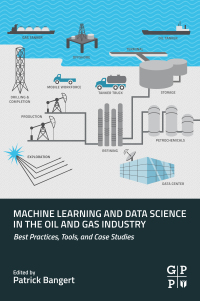Buy Machine Learning and Data Science in the Oil and Gas Industry: Best Practices, Tools, and Case Studies PDF ebook by author Gulf Professional Publishing – published by Gulf Professional Publishing in 2021 and save up to 80% compared to the print version of this textbook. With PDF version of this textbook, not only save you money, you can also highlight, add text, underline add post-it notes, bookmarks to pages, instantly search for the major terms or chapter titles, etc.
You can search our site for other versions of the Machine Learning and Data Science in the Oil and Gas Industry: Best Practices, Tools, and Case Studies PDF ebook. You can also search for others PDF ebooks from publisher Gulf Professional Publishing, as well as from your favorite authors. We have thousands of online textbooks and course materials (mostly in PDF) that you can download immediately after purchase.
Note: e-textBooks do not come with access codes, CDs/DVDs, workbooks, and other supplemental items.
eBook Details:
Full title: Machine Learning and Data Science in the Oil and Gas Industry: Best Practices, Tools, and Case Studies
Edition:
Copyright year: 2021
Publisher: Gulf Professional Publishing
Author: Gulf Professional Publishing
ISBN: 9780128207147, 9781000225976
Format: PDF
Description of Machine Learning and Data Science in the Oil and Gas Industry: Best Practices, Tools, and Case Studies:
Geographical Information System and Crime Mapping features a diverse array of Geographic Information System (GIS) applications in crime analysis, from general issues such as GIS as a communication process, interjurisdictional mapping and data sharing to specific applications in tracking serial killers and predicting violence-prone zones. It supports readers in developing and implementing crime mapping techniques. The distribution of crime is explained with reference to theories of human ecology, transport network, built environment, housing markets, and forms of urban management, including policing. Concepts are supported with relevant case studies and real-time crime data to illustrate concepts and applications of crime mapping. Aimed at senior undergraduate, graduate students, professionals in GIS, Crime Analysis, Spatial Analysis, Ergonomics and human factors, this book: Provides an update of GIS applications for crime mapping studies Highlights growing potential of GIS for crime mapping, monitoring, and reduction through developing and implementing crime mapping techniques Covers Operational Research, Spatial Regression model, Point Analysis and so forth Builds models helpful in police patrolling, surveillance and crime mapping from a technology perspective Includes a dedicated section on case studies including exercises and data samples





